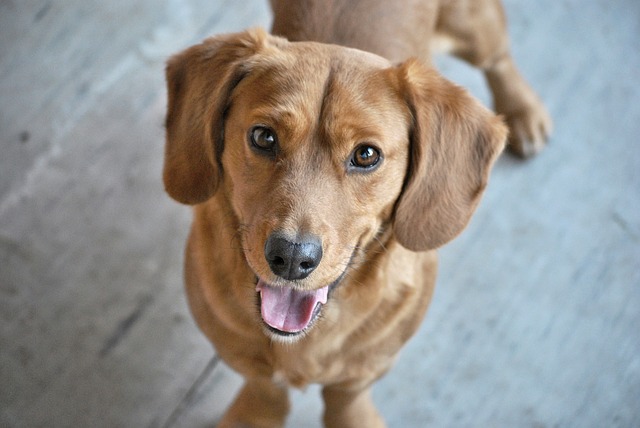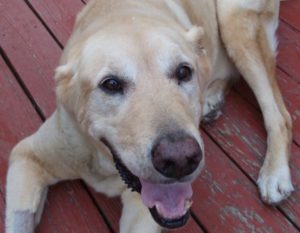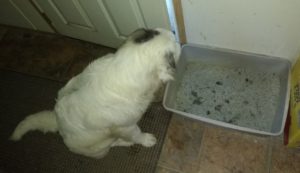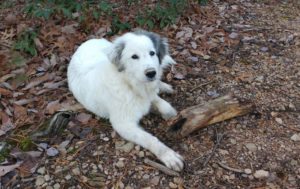I have a new love in my life. She’s a giant, white, fluff of a Great Pyrenees puppy named Luna. She’s a beauty with a heart of gold. But, she’s also a puppy, which means she’s got a lot to learn before she becomes a well-behaved dog.
Actually, what I really mean to say is, I have a lot of work to do to turn my precious girl, who is full of potential, into the dog of my dreams. Luckily, I’ve learned a few things about training dogs, and other animals, over the years that will help make this easier.
If you are considering getting a new dog soon, check out this article on breed basics and tips for getting in the right mindset to successfully train a dog. Then read on to learn the truth about poorly trained dogs.
You May Also Enjoy: “Dog Training 101: Good Dog + Good Trainer = Right Results”
Domesticated Dogs are Highly Trainable
The first thing I know to be true is that almost all dogs are trainable. There are those rare outliers who have some innate intellectual flaw or personality disorder and simply won’t make good pets. On the whole, though, dogs are domesticated animals that respond exceptionally well to our demands of them.
So, when I see a poorly behaved pet dog getting away with things their owners don’t want them to do, I know that the dog is likely not the problem. The owner is!
The Truth About Poorly Trained Dogs
OK, I know that might sound harsh. Truth is, though, once upon a time, I was the person with the poorly behaved puppy. I had a giant yellow lab mix who was ruining my house and wreaking havoc on my life until a professional dog trainer told me the truth I needed to hear.
Here’s what she said:
Tasha, your puppy is about as perfect as a puppy can be. You are just doing a terrible job telling him what you want. And, you are not giving him the attention he needs.
Well, I was flabbergasted!
I mean … I bought my pup every toy, treat, and training tool; I gave him top-notch food products; and I even got him his own health-care plan to make sure my new best friend wanted for nothing. How dare this mean woman say such awful things about me?!
Had I not already paid $60 for an hour-long private training session, I would have walked out in a huff. Luckily, the fee was nonrefundable, and I was too cheap to leave without getting my money’s worth.
Though her people skills were a bit lacking, a few minutes later I understood that this trainer was absolutely right. I was the problem. And with a few simple tips, she got me back on track … and that dog became one of the best friends I have ever had (pictured above in his old age)!
Training Requires Good Technique
I tell this tale because so many dog owners blame their dog without looking at their own behaviors as the cause. Yes, we love our pets and are doing our best to take care of them. But that doesn’t make us good trainers.
Training requires good technique—not love.
I am going to cover some specific tips related to potty training problems in this article. As you read these, keep in mind that the real point of these scenarios is to challenge you to understand and creatively tackle training hurdles by harnessing your dog’s natural behavioral tendencies.
As Bill Mollison, one of the founders of Permaculture, suggested: The problem is the solution. With dog training, this is almost always true!
Potty Training
Many dog owners run into potty-training problems with their new pets. I have faced a few of these types of issues myself. Luckily, though, potty training problems are usually easy to solve with a bit of clever action.
Scenario #1: The Inappropriate Pooper
During that humbling training session I had many years ago, the trainer asked me to describe a problem I had with my puppy. I told her about how I would take my pup for a half-hour walk. He would pee everywhere, but never poop. Then I would take him in the house and pet and play with him, and he would poop on the carpet.
A couple of times, he did it so close to me that I felt like he was taking the proverbial s**t on me. The trainer laughed and told me I should feel loved instead. She explained pooping is deeply personal and requires the dog to feel at ease to go.
My dog was not disrespecting me. He just felt safe, comfortable, and relaxed enough to go poop during our play times. Pooping is also territorial. So, by doing it near to me, he was telling the world I was his person.
To solve this issue, the trainer recommended the following:
- After our walk, play with my dog outside—in the area where I wanted him to poop—instead of bringing him inside.
- Don’t come in until he has done his business—no matter how long it takes!
- Praise him when he went where I wanted him to go.
Thanks to her simple advice, I had that beautiful boy potty trained in no time.
Scenario #2: The Bed Wetter
I had a different challenge with my new Great Pyrenees. She was on pasture with goats for her formative first few months. However, coyotes came into the area, and hunters were running around shooting the coyotes. So, the breeders moved their litter of “working dogs in training” to outdoor dog kennels for safety.
For two weeks, those puppies were pooping and peeing inside their kennels, and the mess would be hosed off periodically. Smart dog that she is, my sweet girl quickly figured out that she was expected to go to the bathroom where she slept.
When we brought her home, she had no problem pooping when we walked her. However, she would wait to pee until she got back to her bed. Then she would let loose a liquid lake on her soft space. Not wanting to lay around in her own pe犀利士
e, she would then sleep curled up on the ground next to her bed.
On the surface, this may seem different than my yellow lab’s pooping problem. Fundamentally, though, it’s the same problem manifesting in a different way. She was simply peeing where she felt most relaxed and comfortable.
To overcome this problem,we let her lay outside on the lawn for a while after our walks. We gave her a chew toy and time to relax. Usually within about 15 minutes of having a good walk, followed by a good rest, she’d stand up and pee where she’d be laying. We’d praise her profusely for peeing outside.
Once she realized it was okay to pee on the lawn, she expanded her territory and started peeing in other places outdoors. A few days after that, she started going pee during our walks so that we didn’t have to “trick” her any more.
Scenario #3: The Submissive Sprinkler
We used to have a rescue dog—a beautiful and otherwise perfect gentleman of a German Shepherd—who would start to sprinkle pee all over the place if you raised your hand near him. He would hunch down and walk in circles until he’d watered everything in the area.
At first we just tried not to raise our hand near him to avoid soliciting that response. But, even just accidentally reaching up to scratch your head would start the sprinkler action.
Well, this was a clear case of submissive peeing and mostly likely indicated prior abuse. So, we knew it would take time to overcome our dog’s early, traumatic experiences. And we didn’t want to be mad at him every time he made a mistake.
Instead, we started walking him without greeting him. We’d call his name from the door and put his leash on in the backyard. That way if he peed, at least it would be outside where it was okay to do so. Then, each time he peed on the walk, we’d give him positive praise and lots of petting for his good performance.
Within a few weeks, he stopped his submissive peeing behavior around people he knew. However, when we introduced new people to our dog, he would revert back to being a submissive peer. So, we simply made all introductions outside.
General Advice on Potty Training Dogs
We humans have been trained to do our business in private. We use things like flushing toilets to remove all evidence of the waste we produce. For dogs, though, urinating and pooping are very much social behaviors.
You May Also Enjoy:
“Make Peace With Your Poop (and Then Make Compost With It!)”
When your dogs pee and poop in the wrong place, they are not trying to punish or torture you. However, they are giving you a message about their feelings and their needs. Understanding what your pet’s potty problem is telling you will help you formulate a workable solution.
- Start with the assumption that your pet is not trying to be bad.
- Try to think like a dog and figure out what communication is being expressed with their choice of potty places.
- Create potty-training rituals that give your dog the opportunity to express themselves, in the places you prefer.
- Stay with your dog outside, as long as is necessary for them to do the deed.
- Give them praise and pets for their good behavior.
Advanced Potty-Training Techniques
Trying to get a dog to go where you want them to is like teaching them to walk. Making them go on command is like teaching them to run. First you have to get them comfortable enough to go where you want them to. Then, you can start to work on getting them to do it faster.
Using words like “go pee pee” or “hurry up” just before your dog goes and then praising them after they go, connects the command with their action. Watch for the signs that they are about to squat and then command them to do it.
Later, when they have then potty training down, use the command before they show interest in doing the deed. The command has the effect that turning on a faucet does for us humans. It makes us think of the thing we are trying to do, so we do it faster.
Conclusion
Potty training isn’t that hard as long as you take the time to do it right from the outset. Also, keep in mind, with young puppies, it’s not always a lack of training, but a lack of bladder control that leads to accidents. The younger the dog, the more often you need to take them out to do their business.
Finally, all dogs behave better and learn faster when they get sufficient exercise. The amount of activity required varies by breed, age, and dog. Most problems can be solved faster just by getting your dog outside for entertainment and exercise often.
What Do You Think?
Do you have any dog-training stories or experiences to share? Have you been outsmarted by your puppies or been clever enough to use their intelligence for your purposes? I’d love to hear about your experiences and challenges, too!

Tasha Greer is a regular contributor to The Grow Network and has cowritten several e-books with Marjory Wildcraft. The author of “Grow Your Own Spices” (December 2020), she also blogs for MorningChores.com and Mother Earth News. For more tips on homesteading and herb and spice gardening, follow Tasha at Simplestead.com.













COMMENTS(1)
We have always had very good success with training dogs. However, we got at different times periods, taking care of them for friends, a Husky and a German shepherd who had been trained to poo inside. After months of training both, it was still hit or miss. I would recommend starting with a younger dog that you can train right from the start.